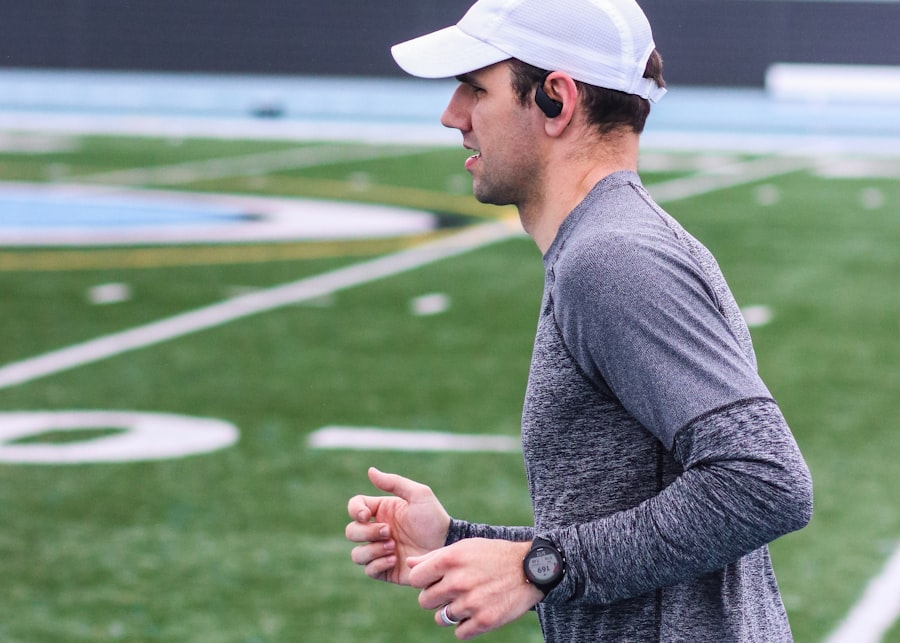Setting realistic goals is essential for a successful fitness journey. Begin by honestly assessing your current fitness level and determining your desired outcome. Whether aiming to lose weight, build muscle, or improve overall health, it’s important to establish specific, measurable, achievable, relevant, and time-bound (SMART) goals.
For instance, rather than stating “I want to lose weight,” a more precise goal would be “I aim to lose 10 pounds in three months by exercising three times weekly and following a balanced diet.” Clear, attainable goals allow for progress tracking and help maintain motivation. When setting fitness goals, consider your lifestyle and commitments. For those with busy schedules, committing to daily two-hour workouts may be unrealistic.
Instead, aim for 30-minute sessions five days a week. Aligning goals with your lifestyle increases the likelihood of adherence and long-term progress. Additionally, acknowledging small achievements along the way is important.
Celebrate milestones such as running a mile without stopping or fitting into previously tight clothing. This positive reinforcement helps maintain motivation and focus throughout your fitness journey. The key to long-term success in fitness is setting realistic goals.
By being specific, considering your lifestyle, and recognizing small victories, you can effectively track progress and stay motivated.
Key Takeaways
- Setting realistic goals is important for long-term success in your fitness journey.
- Nutrition plays a crucial role in achieving your best shape, so focus on a balanced and healthy diet.
- Incorporating strength training into your fitness routine is essential for building muscle and increasing metabolism.
- High-Intensity Interval Training (HIIT) is an effective method for weight loss and improving cardiovascular health.
- Finding the right balance of cardio and resistance training is key to achieving overall fitness and strength.
The Importance of Nutrition in Achieving Your Best Shape
The Importance of a Balanced Diet
A balanced diet that includes a variety of fruits, vegetables, lean proteins, whole grains, and healthy fats can provide the essential nutrients your body needs to perform at its best. In addition to providing energy for workouts, proper nutrition is crucial for muscle recovery and growth. Consuming an adequate amount of protein is essential for repairing and building muscle tissue after strength training workouts.
Macronutrients and Hydration
Carbohydrates are also important for replenishing glycogen stores and providing energy for high-intensity workouts. Furthermore, hydration is often overlooked but is a critical component of nutrition for fitness. Staying properly hydrated can improve performance, prevent fatigue, and aid in recovery.
Portion Control and Balance
It’s important to note that nutrition is not just about what you eat, but also about how much you eat. Portion control is key for maintaining a healthy weight and achieving your best shape. Overeating, even if it’s healthy food, can hinder your progress towards your fitness goals. On the other hand, undereating can lead to fatigue, nutrient deficiencies, and decreased performance. Finding the right balance of nutrients and portion sizes is essential for achieving your best shape and overall health. Incorporating proper nutrition into your fitness journey is crucial for achieving your best shape.
Incorporating Strength Training into Your Fitness Routine

Incorporating strength training into your fitness routine is essential for building muscle, increasing metabolism, and improving overall strength and endurance. Many people associate strength training with bodybuilders or powerlifters, but it is beneficial for individuals of all fitness levels. Whether you use free weights, resistance bands, or your body weight, strength training exercises can help you achieve your fitness goals and improve your overall health.
One of the primary benefits of strength training is its ability to build lean muscle mass. As you increase muscle mass, your metabolism also increases, which can aid in weight loss and weight management. Additionally, strength training can improve bone density and reduce the risk of osteoporosis, especially in women.
It can also help improve posture, balance, and coordination, which are essential for overall functional fitness. Furthermore, incorporating strength training into your fitness routine can help prevent injuries by strengthening muscles and connective tissues. It can also improve athletic performance by enhancing power, speed, and agility.
Whether you’re a runner looking to improve your race times or an older adult looking to maintain independence and mobility, strength training can benefit individuals of all ages and fitness levels. Incorporating strength training into your fitness routine is essential for building muscle, increasing metabolism, improving overall strength and endurance, and preventing injuries. Whether you’re using free weights or resistance bands, strength training exercises can help you achieve your fitness goals and improve your overall health.
The Benefits of High-Intensity Interval Training (HIIT) for Weight Loss
| Benefits of HIIT for Weight Loss |
|---|
| Increased calorie burn |
| Improved metabolic rate |
| Preservation of lean muscle mass |
| Enhanced fat burning |
| Improved cardiovascular health |
| Time-efficient workouts |
High-Intensity Interval Training (HIIT) has gained popularity in recent years due to its effectiveness in burning calories and promoting weight loss. HIIT involves short bursts of intense exercise followed by brief periods of rest or lower-intensity exercise. This type of workout not only burns more calories during the workout but also increases the body’s metabolism for hours after the workout is completed.
One of the primary benefits of HIIT for weight loss is its ability to burn a significant amount of calories in a short amount of time. The intense nature of HIIT workouts elevates the heart rate and engages multiple muscle groups simultaneously, resulting in a higher calorie burn compared to steady-state cardio exercises. Additionally, HIIT has been shown to reduce visceral fat, which is the deep abdominal fat that surrounds vital organs and has been linked to an increased risk of chronic diseases such as heart disease and diabetes.
Moreover, HIIT workouts are versatile and can be adapted to various fitness levels and preferences. Whether you prefer running, cycling, or bodyweight exercises, HIIT can be customized to suit your needs. This makes it an accessible and efficient option for individuals looking to lose weight and improve their overall fitness level.
Incorporating HIIT into your fitness routine can be an effective strategy for weight loss due to its ability to burn a significant amount of calories in a short amount of time and reduce visceral fat. Its versatility also makes it an accessible option for individuals looking to improve their overall fitness level.
Finding the Right Balance of Cardio and Resistance Training
Finding the right balance of cardio and resistance training is essential for achieving overall fitness and reaching specific fitness goals. Cardiovascular exercise, such as running, cycling, or swimming, is beneficial for improving heart health, burning calories, and increasing endurance. On the other hand, resistance training helps build muscle mass, increase metabolism, and improve overall strength and functional fitness.
Finding the right balance between cardio and resistance training depends on individual fitness goals and preferences. For individuals looking to lose weight or improve cardiovascular health, incorporating more cardio into their routine may be beneficial. On the other hand, those looking to build muscle or improve strength may focus more on resistance training exercises.
It’s important to note that both forms of exercise complement each other and can contribute to overall fitness. Cardiovascular exercise can help improve endurance for resistance training workouts, while resistance training can increase muscle mass and metabolism for more effective calorie burning during cardio workouts. Finding the right balance between the two can help individuals achieve their specific fitness goals while improving overall health and well-being.
Finding the right balance between cardio and resistance training is essential for achieving overall fitness and reaching specific fitness goals. Both forms of exercise complement each other and can contribute to improved endurance, muscle mass, metabolism, and overall health.
Overcoming Plateaus and Staying Motivated in Your Fitness Journey

Breaking Through the Stagnation
It’s common for individuals on a fitness journey to experience plateaus where progress seems to stall or slow down. Overcoming plateaus requires patience, perseverance, and a willingness to make adjustments to your workout routine or diet. One strategy for overcoming plateaus is to change up your workout routine by incorporating new exercises or increasing the intensity of your workouts. This can shock the body out of its comfort zone and stimulate new muscle growth or fat loss.
Staying Motivated and Focused
Additionally, staying motivated during a fitness journey requires setting new goals or challenges for yourself. Whether it’s signing up for a race or competition or aiming to lift heavier weights in the gym, having something to work towards can keep you focused and motivated.
The Importance of Support and Rest
It’s also important to surround yourself with a supportive community or workout partner who can provide encouragement and accountability during challenging times. Furthermore, it’s essential to listen to your body and prioritize rest and recovery when needed. Overtraining can lead to burnout, fatigue, and increased risk of injury. Incorporating rest days into your workout routine allows your body to recover and adapt to the stress of exercise, which is essential for making progress in your fitness journey.
Key Takeaways
Overcoming plateaus and staying motivated in your fitness journey requires patience, perseverance, willingness to make adjustments to your workout routine or diet, setting new goals or challenges for yourself, surrounding yourself with a supportive community or workout partner who can provide encouragement and accountability during challenging times.
The Role of Rest and Recovery in Achieving Your Best Shape
Rest and recovery play a crucial role in achieving your best shape and overall fitness level. When you exercise, especially at high intensities or with resistance training, you create micro-tears in your muscles that need time to repair and grow stronger. Without adequate rest and recovery time between workouts, these muscles may not have the opportunity to repair themselves fully.
In addition to repairing muscles, rest days allow the body’s energy stores to replenish so that you have the energy needed for future workouts. Without proper rest and recovery time, you may experience fatigue or decreased performance during workouts. Moreover, rest days are also essential for preventing overuse injuries that can occur from repetitive stress on muscles or joints without adequate recovery time.
By incorporating rest days into your workout routine or including active recovery activities such as yoga or walking on these days, you can reduce the risk of injury while still promoting blood flow and mobility. Incorporating rest days into your workout routine allows your body to recover from the stress of exercise while preventing overuse injuries that can occur from repetitive stress on muscles or joints without adequate recovery time. Rest days also allow energy stores to replenish so that you have the energy needed for future workouts
If you’re looking to take your fitness to the next level, you might want to check out The Muse Camp’s article on “5 Advanced Workout Techniques to Push Your Fitness to the Next Level.” This article provides valuable insights and tips on how to challenge your body and achieve new levels of strength and endurance. With their expert guidance, you can take your fitness journey to new heights. Check out the article here for more information.
FAQs
What is Level Fitness?
Level fitness refers to a state of physical and mental well-being that allows individuals to perform daily activities without experiencing excessive fatigue or physical strain. It encompasses various aspects of health, including cardiovascular endurance, muscular strength, flexibility, and body composition.
Why is Level Fitness Important?
Maintaining a good level of fitness is important for overall health and well-being. It can help reduce the risk of chronic diseases, improve mental health, boost energy levels, and enhance quality of life. Additionally, being fit can improve performance in sports and other physical activities.
How Can I Improve My Level Fitness?
Improving level fitness involves engaging in regular physical activity, such as cardio exercises, strength training, and flexibility exercises. It also requires a balanced diet, adequate rest, and stress management. Consulting with a fitness professional or healthcare provider can help create a personalized fitness plan.
What Are the Benefits of Having Good Level Fitness?
Having good level fitness can lead to numerous benefits, including improved cardiovascular health, increased muscle strength and endurance, better flexibility, weight management, enhanced mood and mental well-being, and a reduced risk of chronic diseases such as heart disease, diabetes, and obesity.
How Can I Measure My Level Fitness?
There are various ways to measure level fitness, including assessments of cardiovascular endurance, muscular strength and endurance, flexibility, and body composition. Common fitness tests include the 1-mile run, push-up test, sit and reach test, and body mass index (BMI) calculation. Consulting with a fitness professional can provide a more comprehensive assessment.




